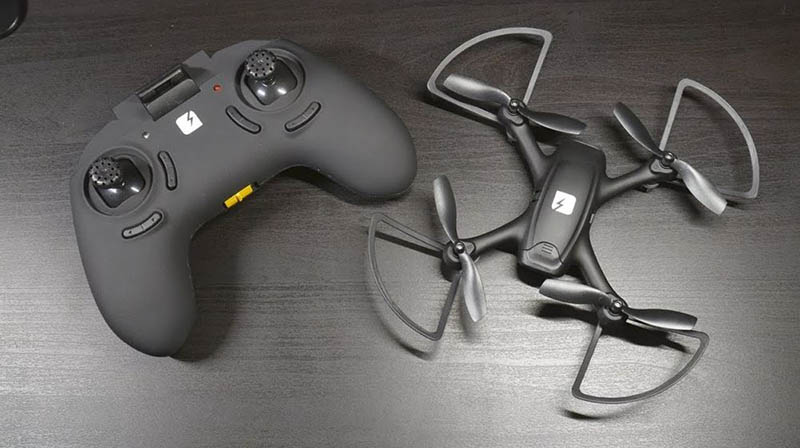
Slowly move the joysticks to the motor start postions, again, does the image on your screen change in accordance with the movements of the joys stick? Start the Go app for your drone and have a look in the controller calibration menu, waggle the joysticks, does the image on your screen change in accordance with the movements of the joys stick ( lines of blue dots on mine which lengthen or shorten)? If your drone is linking with the controller then, with the drone off, switch the controller on and connect it to your phone or tablet. I suspect the problem lies in a sensor/potentiometer on the end of the forward/back pivot. The drone then flies perfectly PROVIDING I do not exceed the 100% back position. I can not, via the joysticks, start the motors of a linked drone with this controller BUT I can start those motors via the launch button on the screen of my phone or tablet. This happens once the 100% back reading has been reached and the joystick is moved beyond that point towards the "back" limit of its travel. I have a controller with which the output, shown on my screen, for the RH joystick SUDDENLY switches from 100% back to 100% forward. Slowly move the joysticks to the motor start postions, again, does the image on your screen change in accordance with the movements of the joys stick? Start the Go app for your drone and have a look in the controller calibration menu, waggle the joysticks, does the image on your screen change in accordance with the movements of the joys stick ( lines of blue dots on mine which lengthen or shorten)? The controls are exactly the same, but you can smash these up with abandon without the tears that come from crashing your $2000 camera drone.If your drone is linking with the controller then, with the drone off, switch the controller on and connect it to your phone or tablet.
#Fader drone manual#
Either way, practicing flight and getting used to the controls in a simulator is the safest way to learn.Īlternatively, we recommend buying a cheap nano drone to practice manual flight.

You can also spend a bit of money and buy a computer simulator that actually comes with a dummy controller. There are some apps, with simulated on-screen controls. Getting Startedīefore you fly, it’s worth considering a drone simulator to practice the controls. This will usually involve inserting batteries, syncing the drone and controller and making sure there’s no visible damage or other problems you can spot by eye.
#Fader drone how to#
Consult your drone’s manual for instructions on preflight checks and how to get it ready to fly. Before You Flyīefore you first learn how to fly a drone, you’ll need to do some prep work. If you combine yaw and roll inputs, you can perform banking turns. For example, if you push the right stick into the corners of a Mode 2 controller, your drone will fly diagonally. Remember that you can mix these control inputs in various ways to produce different maneuvers. What’s happened is that throttle and pitch have reversed position, but roll and yaw are still in the same place as with Mode 2. We still have throttle, yaw, roll and pitch. Most drones and radio controlled craft will ship with a Mode 2 controller or with the controller switched to Mode 2 if it supports both modes. There are two standard layouts for stick controls, known as Mode 2 and Mode 1 respectively. There may be additional buttons on the controller, but these differ from one model to the next, so consult your drone’s manual to learn what they do. One for your left thumb and one for the right. There are two control sticks on either side of the controller.


If you’ve ever used a video game controller, the basic layout should be familiar to you when you first learn how to fly a drone.

Some drones are flown using on-screen smartphone controls, but the vast majority are controlled using a dedicated physical controller. We can’t provide universal information here, because every country, state and local government has different rules. There are rules about where you may fly, whether your drone needs to be registered and whether you need to obtain a ground pilot’s license. Drone Laws and Youīefore you even buy a drone, you should review the drone regulations for your country and region. They are not foolproof, so it’s best not to rely on them. So do take note of where the sensors can see. Not every direction of flight will be covered in most cases. These sensors can sense objects such as walls and stop the drone before it crashes. High-end drones are also likely to have ultrasonic collision sensors. This makes them much harder to fly, but also more rewarding if you’re looking for a challenge. However, racing drones and low-end toy drones are likely to only have a gyro. This makes it easy to fly even for beginners. Combining all three of these features lets a drone automatically maintain its position in 3D space.


 0 kommentar(er)
0 kommentar(er)
